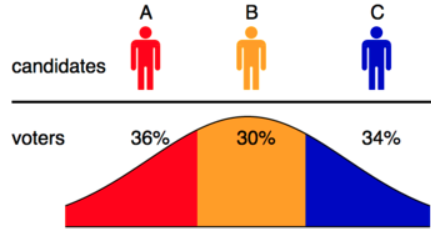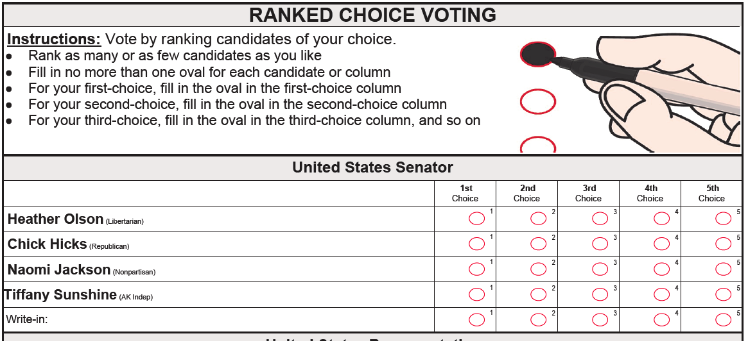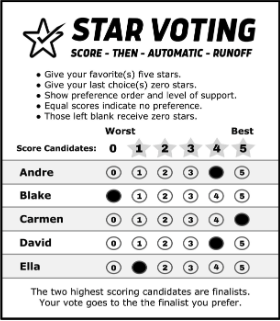The Case for Multiple Choice Voting in the Primaries
Multiple choice voting , at first, may sound like a lame strategy for the opposition primaries. However, Alejandro makes a strong case that this is the only way to produce a strong contender


According to most polls, around 75% of Venezuelans have a negative opinion of Nicolás Maduro and his administration. Nevertheless, there’s no other political leader—except, maybe, Rafael Lacava and Benjamín Rausseo (Er Conde del Guácharo)—that has an approval rating significantly higher than 35%. In fact, in almost every case, the disapproval rate is higher than the approval rate. Carrying the weight of skyrocketing impopularity, the opposition has agreed to hold primary elections on October 22nd to face the challenge of unifying opposed political views, constructing a diverse majority and legitimizing its leadership to represent the discontent of the majority and face Maduro in the 2024 elections.
Nevertheless, so far, the mechanism agreed for the primary is the “simple majority” rule. This means that the winner of the election will be the candidate that receives more single votes. But, with a highly fragmented and pugnacious opposition, this mechanism could prove to be a failure.
Why Simple Majority Voting Could Fail
Firstly, simple majority does not guarantee that the winner represents the political will of most of the electorate. Depending on vote distribution, more candidates means less percentage of votes needed to win. In an election polarized by two candidates, the winner necessarily needs at least 50% plus one vote of all votes to win. Yet, when the number of candidates increases, this is no longer the case. For example, in an election with three candidates, one could win with less than 40% of the votes (Fig. 1) and in an election with four candidates (like Venezuela’s 1993 presidential elections) one may win with only 30%. In an election with five candidates, even 25% of the votes could be enough.

Fig. 1
In the primaries, this could be even worse: until now, around a dozen candidates say they’re planning to run in the primaries—which means the election could be won with less than 9% of the votes. That scenario would fail to achieve the goal of representing most of the electorate and there would be high chances that the winner (with perhaps only 9% of the votes) is not the preferred candidate of the majority but just the largest minority within a rainbow of tiny minorities.
Secondly, with a simple majority primary, candidates do not have incentives to build big tent coalitions and centrist campaigns to attract the highest share of voters. Instead, they could recur to polarization to achieve victory through its core voters. This leads to a scenario where it is harder to build agreements and unify the different leaderships within an extremely diverse opposition—which ranges from the Marxist-Leninists in Bandera Roja to the classical liberals and conservatives in Vente Venezuela—in order to face Maduro.
Lastly, it is unlikely that a winner elected with a minority vote and in a context of political polarization, achieves enough legitimacy from its peers to be considered the true leader of the coalition to face Maduro in 2024.
Ranking the Candidates
To address these obstacles, the National Commission of Primaries has researched and evaluated several alternative voting mechanisms. In fact, Jesús María Casal—the Commission’s president—said in late March that a multiple choice voting mechanism (voto múltiple) was being considered. There are many examples of such voting systems, like Ranked Choice voting and STAR voting.
In the Ranked Choice voting system, voters rank first their most preferred candidate in the ballot and last their least preferred (Fig. 2), with all other candidates ranked to different degrees in the middle. Then, the first choices are counted and the candidate that places last is eliminated from the count. The votes of the eliminated candidate are redistributed to the next preferred choice. The process repeats itself until there is a candidate that achieves more than half of all the votes (50% of all votes plus one).
Imagine there were four candidates: Yellow, Blue, Green and White. If Green was ranked the lowest, he would be eliminated immediately. If White was the next preferred candidate, all of Green’s votes would go to her. Still, White remains less ranked than Blue: all of her votes would then be redistributed to Blue. Finally, the process is repeated again between Blue and Yellow: until one of the two achieves more than half of all the votes.

Fig. 2
In the STAR voting system, the voters assign stars (or points) to the candidates in their ballot. The preferred candidate receives the most stars or points (Fig. 3). Then, the stars or points are counted until only the two candidates with the most stars remain. Then, the votes (ballots) of the two remaining candidates are counted. The one with the most stars is the winner of the election.
In this system, Yellow and Blue had a higher share of stars from voters than White, Green and Orange. Thus, only the two candidates’ ballots would then be counted until the one with the most stars is chosen.

Fig. 3
Be it STAR or Ranked Choice, these are simple options that the National Commission of Primaries should consider before publishing its voting rules on May 7th. These options solve the problems of the simple majority and guarantee that the winner is the preferred candidate of the electorate’s majority. This way, the primary’s winner would be chosen through the largest share of highest-ranking votes, avoiding the possibility of a candidate chosen by a minority of core voters. Instead, the candidate would be elected by the widest possible share of opposition voters: even those that had a different preferred candidate.
Also, these systems set political incentives to decrease polarization, forcing candidates to shift their positions to the center and build the alliances and consensus that will be necessary to lead a diverse and broad oppositional coalition. Indeed, it could set the bases for a big tent alliance where people as disparate as Henri Falcón and María Corina Machado find a common ground—which is the only path to build an interesting challenge against Maduro in 2024.
Caracas Chronicles is 100% reader-supported.
We’ve been able to hang on for 22 years in one of the craziest media landscapes in the world. We’ve seen different media outlets in Venezuela (and abroad) closing shop, something we’re looking to avoid at all costs. Your collaboration goes a long way in helping us weather the storm.
Donate




